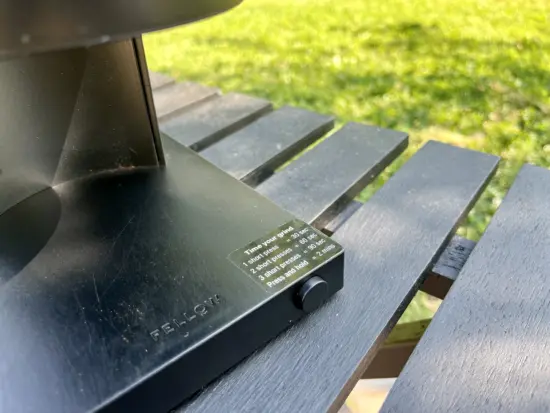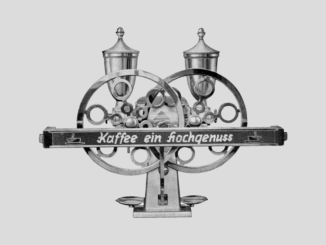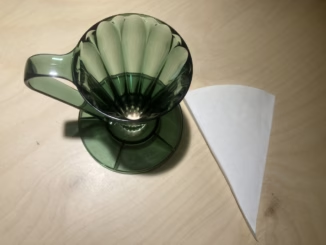
The new Opus from Fellow is a game-changer in the affordable home grinder market.
BY JOSH TAVES
SPECIAL TO BARISTA MAGAZINE
Photos by Josh Taves
At this point, you’ve almost certainly seen a Fellow Opus Grinder. The marketing for these grinders has become so prolific that I was honestly surprised to find that they have only been available for purchase for a few months. If there ever was a grinder more hyped in the coffee world than the Fellow Opus, I am not aware of it (although I have been accused of living under a rock on more than one occasion). I have had my Opus for a few weeks now, and I’m here to share with you just exactly what the hype is about.

I went to my trusty internet search engine and typed in “new home coffee grinders.” Many sleek grinders popped up. There were design aesthetics up the wazoo, myriad burr materials and sizes, and too many features to even shake a stick at. So what makes the Fellow Opus different? In truth, once you weed out all the blade grinders and the grinders made by kitchenware brands, the Opus is the only grinder under $200. That is definitely worth noting.
Design and Features
OK, so the Fellow Opus is relatively cheap, but is it cheap? Well, that’s what I wanted to find out. If there is one thing I know, it’s that a cheap grinder isn’t really worth owning for very long.

Upon opening the box, one is immediately greeted by the playful and high design that Fellow has become known for. The packaging elicits excitement and reminds the user that the Opus is intended for both espresso and brewed coffee.
I dive in. The sleek, matte black aesthetic greets my senses, and the atypical, cylindrical front of the grinder piques my interest. Setup is easy and the grinder is ready to go by simply plugging it in. No need to worry about where to start with grind size—Fellow has a handy dandy guide printed right inside the hopper lid (check the user manual for even more grind size recommendations). While I didn’t count, Fellow’s website says that the Opus has over 40 grind settings spanning from “espresso” on the fine end to “cold brew” on the coarse end. Simply turn the selector just below the hopper to the desired number and you’re in business.
The Grind
Grind setting suggestions are great. But what if you’re a rookie looking to try new brewing methods? Or what if you just want to up your home coffee game for the first time? Take a peek inside the user manual. There are in-depth suggestions on coffee dosages and coffee-to-water ratios for a variety of commonly used brewers. Very handy. The single button on the grinder starts a timer for an automatic 30, 60, or 90 seconds of run time. The grounds drop straight down (which Fellow claims reduces retention) into a cup that is magnetically aligned. Get the cup close to the spout and it automatically snaps into place as if possessing a Phoenix feather core. (That’s from Harry Potter, which is a book series from the late 1990s and 2000s, young ’uns). The grinds cup even has a pretty neat cone-shaped lid that fits almost exactly under the chute where the grounds come out. This is to help reduce those static flyers that are inevitable.

Additional Notes
I will say that I found the list of features on the Opus to be impressive given the price point. While it wasn’t the quietest grinder I’ve ever used (is any grinder quiet when the kids are sleeping?), I was overall impressed with its low profile and sleek design. I found the grounds to have a better-than-expected level of uniformity. I experienced no choking or excess fines in my brews using a visual inspection. The coffee I drank from the grinder was clear and complex—more so than other grinders I’ve used at this price point. It truly did improve my morning home coffee ritual.
The Final Analysis
My conclusion? While this test didn’t last long enough to find out about the long-term durability of the Fellow Opus (a common drawback in grinders of this price point), it did prove that Fellow has perhaps created the best $200ish grinder on the market. For my money, that is a pretty amazing feat.
ABOUT THE AUTHOR
Josh Taves is the head of business development for Stovetop Roasters in Michigan and the creator of CuppingBrewer.com. He is also a 2017 USBC finalist, so he knows his way around lots of different coffee gadgets. He’s been working in the coffee industry since 2006 and enjoys taking advantage of all the great adventures the outdoors has to offer.
READ THE LATEST BARISTA MAGAZINE
Out now: It’s the June + July 2023 issue of Barista Magazine featuring Martin Shabaya of Kenya on the cover. Read it for free with our digital edition. Get your Barista Magazine delivered; start a subscription today! Visit our online store to renew your subscription or order back issues.





